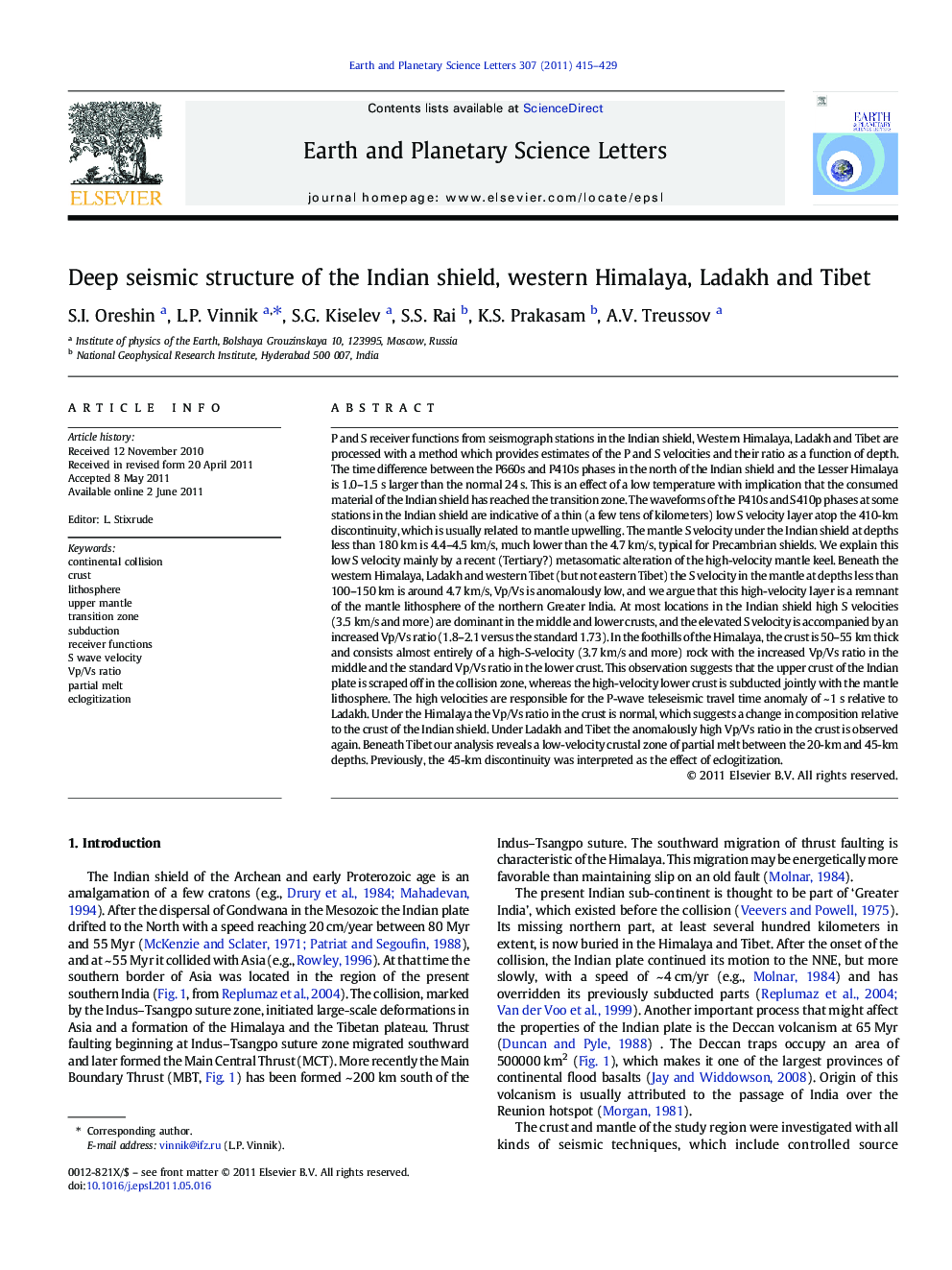| کد مقاله | کد نشریه | سال انتشار | مقاله انگلیسی | نسخه تمام متن |
|---|---|---|---|---|
| 4677912 | 1634825 | 2011 | 15 صفحه PDF | دانلود رایگان |

P and S receiver functions from seismograph stations in the Indian shield, Western Himalaya, Ladakh and Tibet are processed with a method which provides estimates of the P and S velocities and their ratio as a function of depth. The time difference between the P660s and P410s phases in the north of the Indian shield and the Lesser Himalaya is 1.0–1.5 s larger than the normal 24 s. This is an effect of a low temperature with implication that the consumed material of the Indian shield has reached the transition zone. The waveforms of the P410s and S410p phases at some stations in the Indian shield are indicative of a thin (a few tens of kilometers) low S velocity layer atop the 410-km discontinuity, which is usually related to mantle upwelling. The mantle S velocity under the Indian shield at depths less than 180 km is 4.4–4.5 km/s, much lower than the 4.7 km/s, typical for Precambrian shields. We explain this low S velocity mainly by a recent (Tertiary?) metasomatic alteration of the high-velocity mantle keel. Beneath the western Himalaya, Ladakh and western Tibet (but not eastern Tibet) the S velocity in the mantle at depths less than 100–150 km is around 4.7 km/s, Vp/Vs is anomalously low, and we argue that this high-velocity layer is a remnant of the mantle lithosphere of the northern Greater India. At most locations in the Indian shield high S velocities (3.5 km/s and more) are dominant in the middle and lower crusts, and the elevated S velocity is accompanied by an increased Vp/Vs ratio (1.8–2.1 versus the standard 1.73). In the foothills of the Himalaya, the crust is 50–55 km thick and consists almost entirely of a high-S-velocity (3.7 km/s and more) rock with the increased Vp/Vs ratio in the middle and the standard Vp/Vs ratio in the lower crust. This observation suggests that the upper crust of the Indian plate is scraped off in the collision zone, whereas the high-velocity lower crust is subducted jointly with the mantle lithosphere. The high velocities are responsible for the P-wave teleseismic travel time anomaly of ~ 1 s relative to Ladakh. Under the Himalaya the Vp/Vs ratio in the crust is normal, which suggests a change in composition relative to the crust of the Indian shield. Under Ladakh and Tibet the anomalously high Vp/Vs ratio in the crust is observed again. Beneath Tibet our analysis reveals a low-velocity crustal zone of partial melt between the 20-km and 45-km depths. Previously, the 45-km discontinuity was interpreted as the effect of eclogitization.
► We present inversion of receiver functions from a few tens of seismograph stations.
► There is evidence of large lateral and vertical variations of both Vs and Vp/Vs.
► These data are interpreted in terms of structure and processes in the lithosphere.
► The mantle transition zone is cooled by continental subduction.
► A low-Vs layer is found atop the 410-km discontinuity beneath the Indian shield.
Journal: Earth and Planetary Science Letters - Volume 307, Issues 3–4, 15 July 2011, Pages 415–429